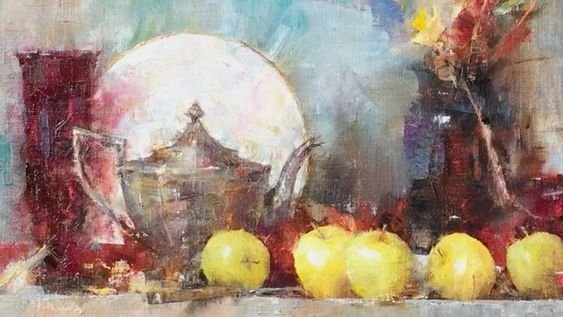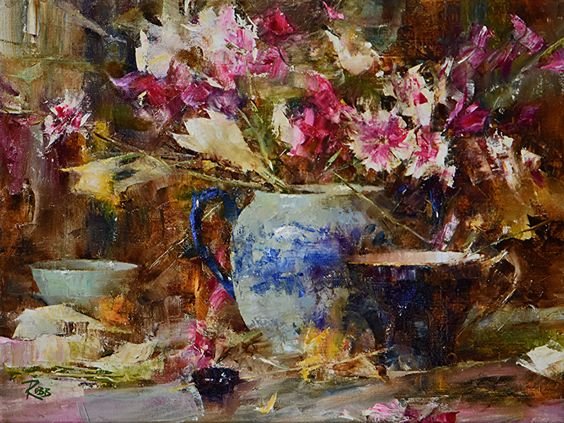Choosing Your Background
During the arrangement process, Laura Robb would have already chosen a background that will complement the subject matter in the composition. She does not attempt to decide on or invent a background later. In a direct painting method, there will be indications of background established as you work the edges where the objects come up against it. Once Laura has the center of interest established, she has a lot of information as to where she will be going forward with the rest of the painting.
Laura’s next objective is to make all of the other areas interesting without having them compete with the story of the painting --- still interesting, but not commanding equal attention. This can involve pushing colors/values in a subtle way or varying the paint application. Alternating transparent to opaque areas can also be really helpful. Once she has made most of the careful observations that will enable her to make decisions quickly, the background is brushed in fairly spontaneously. It's not easy to get into this mindset of letting go with the careful work that proceeded it, but being able to trust what you have on your canvas already is the key to making it work. Usually, that spontaneity results in more than enough added interest. At that point, you can leave it as is or stand back and carefully decide what areas to soften or play down. Occasionally, Laura will decide the painting needs something more to bring it together and end up adding some color or texture to the background.
Laura does not have a set formula for choosing background colors, but a relatively safe place to start would be to identify a strong color in the center of interest (for example-- red) and then choose a more neutral version of that color for the background (like Terra Rosa or Mars Violet). Another option that generally works well is to choose the complement of that strong center color. In the case of red/orange, it could be Viridian or something close to it. Often but not always, Laura’s choices will be a muted version of the color so the background does not compete with the center of interest.
Want more tips like this from Laura?
Join Laura in her self-study course, “The Puzzle of Painting,”or her FREE webinar “Composing with Flowers.”
Click to find out more:


